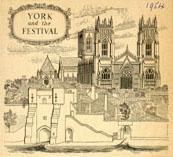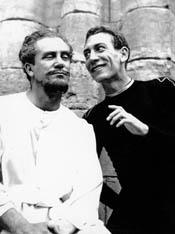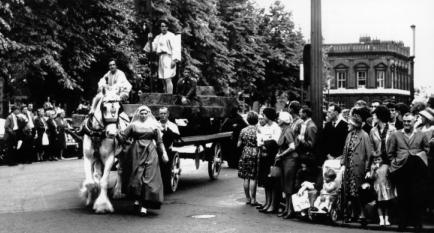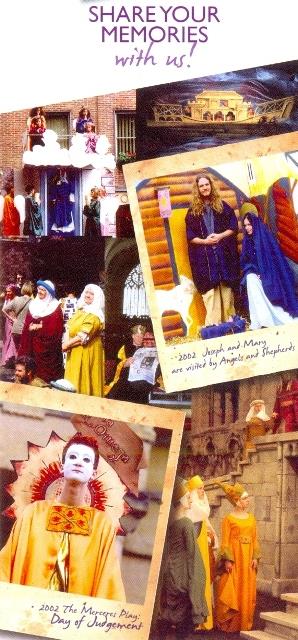In the Beginning: Revival
In 1947, towards the end of an exceptionally dispiriting year, a handful 
of distinguished York churchmen, businessmen and local politicians met to discuss unexpected news. The Chancellor of the Exchequer had asked the Arts Council of Great Britain to present a national Festival of the Arts in 1951, to commemorate the centenary of the Great Exhibition of 1851. York was a chosen city to participate.
Four years later, the revival of the York Mystery Plays in the ruins of St Mary's Abbey was the most widely applauded Festival event in the country, with over 26,000 people witnessing the Plays, including Prime Minister Clement Attlee.
 Festival Director Keith Thomson had originally envisaged processional 'street performances' of York's Corpus Christi Plays. If the preferred Festival author, J. B. Priestley, had responded favourably to a new commission it can be guessed that the York Festival would have taken a very different course. But once E. Martin Browne's interest in producing the York Plays had been aroused, the die was cast. In June 1951 the Mystery Plays were revived in the ruins of St Mary's Abbey using a cast of local amateur actors, with a professional actor playing the deity. The NCEM archive holds press cuttings from 1949 excitedly building up to the plays. The Gardens were not open to the public in those days; actors needed an entry pass for rehearsals there.
Festival Director Keith Thomson had originally envisaged processional 'street performances' of York's Corpus Christi Plays. If the preferred Festival author, J. B. Priestley, had responded favourably to a new commission it can be guessed that the York Festival would have taken a very different course. But once E. Martin Browne's interest in producing the York Plays had been aroused, the die was cast. In June 1951 the Mystery Plays were revived in the ruins of St Mary's Abbey using a cast of local amateur actors, with a professional actor playing the deity. The NCEM archive holds press cuttings from 1949 excitedly building up to the plays. The Gardens were not open to the public in those days; actors needed an entry pass for rehearsals there.
 Despite the enormous enthusiasm that greeted the return of the Plays, restrictions remained. A prohibition on the representation of the deity - God or Christ - still existed in England, so the name of the professional actor hired to play Jesus for the 1951 production was kept a secret. And the Dean of York still maintained a ban on the representation of the giving of the Sacrament of the Last Supper.
Despite the enormous enthusiasm that greeted the return of the Plays, restrictions remained. A prohibition on the representation of the deity - God or Christ - still existed in England, so the name of the professional actor hired to play Jesus for the 1951 production was kept a secret. And the Dean of York still maintained a ban on the representation of the giving of the Sacrament of the Last Supper. 
The tremendous interest that the Plays inspired - locally, nationally and internationally - created a new tradition that has continued until the present day.

Contact the archivist to share your memories and photos. Using our photos, this page in our archive shows for instance the various ways in which God's rainbow - a symbol of hope - has been attempted.